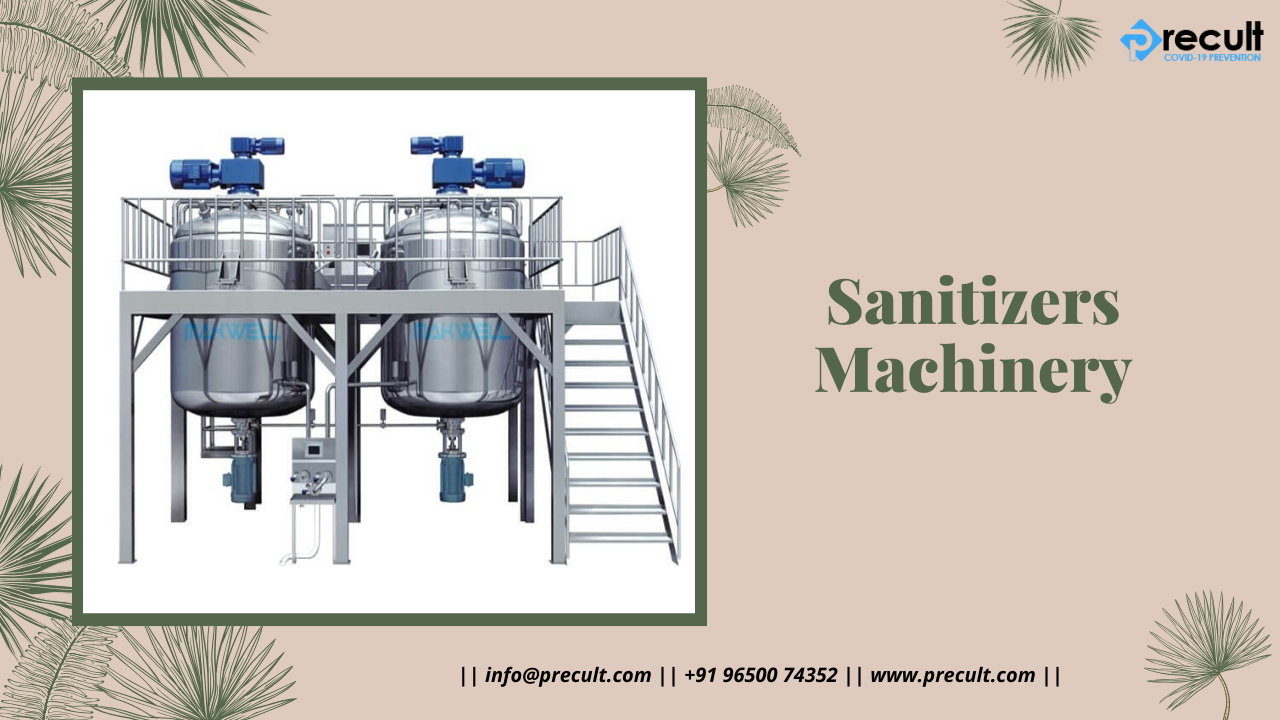
Hand sanitizer is an alternative to soap and water, due to the fact that soap and water is not convenient to be carried around and it is also time consuming compared to hand sanitizers. Hand sanitizers are an antiseptic solution. It is used to combat the transmission of infection, which is majorly caused through hand transmission, further causing several diseases such as nosocomial food-borne illness and the disease which is terrorizing the world lately which is called Coronavirus which is also known as covid-19.
Hand sanitizers aren’t a difficult product to manufacture. A standard hand sanitizer and the recommended hand sanitizers by WHO should consist of about 70 percent of pure isopropyl alcohol and 30 percent aloe Vera gel or PEG (Polyethylene glycol) as an inactive ingredient.
Building area required for manufacturing
- Plot Size 500 sq mt
- Covered Area 10,000 sq ft.
Plot Shape should be Rectangle or Square. Avoid manufacturing on irregular shaped plot as space may waste.
For Bulky product use shed to store different kinds of quantity empty bottles
Different rooms are required to built
Office:
- Reception
- Director room
- Account office
- Conference Hall
- Washroom
- Pantry
Personal Facilities:
- Lunch Room
- Washroom
- Dress change Room
Raw Material Store Rooms:
- Dedusting Area
- Quarantine Area
- Sampling Area
- Undertest Area
- Approved Area
- Dispensing Area
- Day store
Stores:
- Bottle Store
- Label box Store
- Finished Goods Store
Laboratory Rooms:
- Chemical lab
- Instrument lab
- Stability lab
- Control sample
Different types of Hand Sanitizer:
Alcoholics hand sanitizer generally contain alcohols or isopropanols as the active ingredient that killed germs and bacteria. The contents of alcohols in the hand sanitizing products usually ranges between 60% and 95%, which is considering by FDA to be effectively killing germ and bacteria, including corona viruses, MRSA, and Ecoli.
Alcohol based hand sanitizers are considering to be more potent and rapid in killing germ, virus and bacteria, compared to alcohols-free hand sanitizer. However, alcohol based hand sanitizer could be worrisome to some consumer for its risks of flammability intoxications, and damages to the users’ skins.
- Gel Alcohol-Based Hand Sanitizers
Experiments have been done to examine the efficiency of liquid hand sanitizers and gel hand sanitizer. In general, liquid hand sanitizer better than gel hand sanitizers.
Scientists proved that liquid hand sanitizer in liquid form reacts sooner compared to gel hand sanitizers. On average, it took the liquid ones 15 seconds and the latter the double of the time to act.
- Foam Alcohol-Based Hand Sanitizer
The foam hand sanitizers are more economical compared to liquid or gel ones, for the airy and incompact texture of the products. In addition, foam is more clinging to hands and will not easily drop, which could cause damage to the floor or the carpet.
- Spray Alcohol-Based Hand Sanitizer
Like foam hand sanitizers, there are some arguments regarding the economic efficiency of spray hand sanitizers. Some argue that spray is wasteful compared to liquid and gel since the drops might miss your hands or be deflected into the air when spraying, some hold the opposite opinion saying that spray is more cost-effective, for the liquid is condensed by the nozzle and thus delivers fewer doses, although this might lead to the dilution of active ingredients.
No quantifiable experiment has been made to testify each of the arguments, we suggest the buyers choose the products based on their own judgment.
- Antiseptics Alcohol-Free Hand Sanitizer
Alcohol-free sanitizers often contain benzalkonium chloride, as its main ingredient in killing bacteria and viruses.









